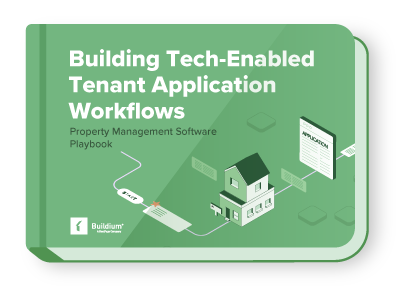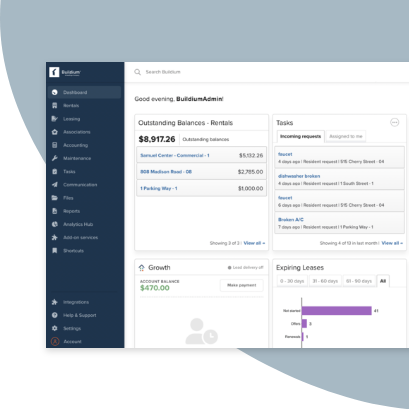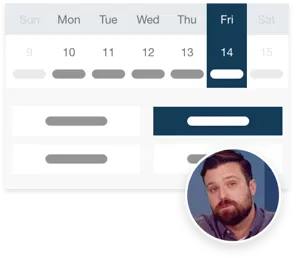Disclaimer: This blog post is meant for informational purposes only and does not constitute legal advice. Consult with a licensed attorney in South Dakota for specific legal guidance.
Ready to take the guesswork out of leasing in South Dakota? Having the right lease agreement can help make property management easier. Use this post to get filled in on all the components, addenda, and other details to include in your agreements.
You can even get started creating your own documents by downloading our free South Dakota lease agreement template using the button at the top of this post.
What Is a South Dakota Lease Agreement?
A South Dakota lease agreement is a written contract between a landlord or property management company and a tenant. It spells out the terms of a residential rental—including rent, responsibilities, and policies—in clear, enforceable language.
This legally binding contract plays a key role in managing residential properties across the state. It serves both practical and legal functions: defining expectations, documenting agreements, and protecting all parties when questions or disputes arise. For property managers, a strong lease agreement lays the foundation for a stable and well-managed rental operation.
Who Needs a South Dakota Lease Agreement?
Any landlord or property manager renting out residential properties in South Dakota should use a formal lease agreement. Not only does it establish legal protections, but South Dakota law also requires written agreements for any lease lasting longer than a year.
Without a signed lease, landlords may face difficulties enforcing rent payments, handling damage claims, or setting occupancy rules. Similarly, tenants may lack clarity on their rights and obligations.
Here’s who benefits most from using a South Dakota lease agreement:
- Property managers, who gain a clear framework for managing tenants and rental income
- Landlords, who reduce risk and protect their investment
- Tenants, who understand the rules of their lease from day one
Having a signed lease in place reduces the chance of misunderstandings, protects everyone’s interests, and keeps operations running smoothly.
Pro Tip: Buildium’s purpose-built leasing software can help you get even more efficient with your leasing process.
Types of South Dakota Lease Agreements
There’s no one-size-fits-all approach when it comes to lease agreements in South Dakota. Property managers can choose from several types, depending on the nature of the rental.
- Fixed-Term Lease Agreement: Often used for year-long rentals, this agreement covers all standard terms such as rent, maintenance, and responsibilities.
- Month-to-Month Lease Agreement: This lease renews each month until canceled by either party. It offers flexibility, especially for short-term arrangements.
- Sublease Agreement: A tenant rents out their unit—or part of it—to another person. The original tenant remains responsible for the lease terms.
- Roommate Agreement: This contract outlines shared responsibilities when multiple people live in the same unit. It addresses payment splits, chores, and personal space.
Choosing the right lease type helps property managers tailor the agreement to each situation and tenant.
What Should a South Dakota Lease Agreement Include?
A well-written lease agreement covers all the important details so both the landlord and tenant understand their roles. The following sections explain what to include to create a clear, complete lease.
Parties Involved
Every lease should begin by identifying the parties involved. That includes the tenant, the landlord, and, when applicable, the property management company. Include full contact information for each party. Clear identification makes it easier to communicate and document notices or repairs.
Lease Duration Dates
The lease should clearly outline whether the arrangement is a short-term tenancy or long-term tenancy. Include:
- Lease start and end dates
- Rent amount and when it’s due
- Accepted payment methods (such as checks or electronic payments)
- Rules around rent increases and required notice periods
Spelling out these details helps both sides stay on track throughout the lease term.
Rent and Security Deposit Information
This section covers the financial aspects of the lease. List the rent amount, due date, how rent should be paid, and any late fees. If late fees apply, explain when they’re charged and how much they are.
Security deposits are another key part of this section. Your lease should explain:
- The total security deposit collected
- Where it will be held
- When it will be returned
- Conditions for withholding part or all of the deposit
By outlining rent and deposit policies upfront, you reduce confusion and build trust with tenants.
Occupancy Limits
A standard South Dakota lease agreement should specify who can live in the rental. This usually includes only the listed tenants and their children. It prevents unauthorized long-term visitors from moving in without notice.
Landlords have the legal right to enforce occupancy limits. If tenants break this rule, landlords may begin eviction proceedings. Include clear occupancy language in the lease to prevent future issues.
Property Management Company & Tenant Responsibilities
Responsibilities should be spelled out clearly for both parties. For the property management company or landlord, this typically includes:
- Maintaining habitable living conditions
- Providing working utilities and safe access
- Managing garbage disposal and shared areas
- Making necessary repairs
Tenants are usually expected to:
- Use appliances and facilities properly
- Avoid excessive noise
- Keep the rental clean and sanitary
- Report damage or needed repairs promptly
Each lease should also include property-specific rules, such as parking guidelines or lawn maintenance responsibilities.
Pet Policies
If you allow pets, explain the pet policies clearly. Include:
- What types of animals are permitted
- Any limits on pet size or number of pets allowed
- Extra cleaning deposits or pet rent
If your property has a no-pets policy, that should be stated directly. Also, let tenants know they’re responsible for cleaning up after pets and paying for any damage caused.
South Dakota Lease Agreement Addenda and Disclosures
South Dakota law requires certain disclosures and addenda to be included in residential lease agreements. These documents protect tenants, reduce liability for landlords, and keep leases compliant with local and federal regulations.
This list is not exhaustive, so consult a legal professional if you’re unsure about what to include in your own agreements.
Lead-Based Paint Disclosure
Federal law requires a lead-based paint disclosure for any rental unit built before 1978. Landlords must:
- Provide a completed disclosure form
- Give tenants the EPA booklet “Protect Your Family from Lead in Your Home”
- Share any known records or reports about lead paint hazards
Failing to disclose this information can result in legal penalties and health risks for tenants.
Prior Methamphetamine Manufacture Disclosure
Under S.D. Codified Laws § 43‑32‑30, landlords must inform tenants—in writing—if they know methamphetamine was ever manufactured in the unit. This applies only to the specific unit involved, not the entire property.
This disclosure protects tenants from potential health risks and keeps landlords in compliance with South Dakota law.
Optional Disclosures & Addendums
Though not legally required, including optional addendums can help clarify expectations and limit landlord liability. Consider adding disclosures related to:
- Asbestos
- Bed bugs
- Mold
- Plumbing or structural defects
- Smoking policies
- Medical marijuana use
- Pool safety rules
- Non-refundable fees
These add-ons can prevent misunderstandings and reduce disputes.
Consequences for Not Including Mandatory Disclosures
Skipping required disclosures puts landlords at risk. Possible consequences include:
- Legal action by tenants
- Fines or penalties
- Parts of the lease becoming unenforceable
Following both federal and South Dakota disclosure laws protects you from costly mistakes and supports tenant rights.
South Dakota Lease Agreement Laws and Regulations
South Dakota has specific rules that affect how lease agreements are written and enforced. Understanding these laws helps property managers avoid violations and build better tenant relationships.
Security Deposits
According to SD Codified Laws § 43-32-6.1, landlords can charge up to one month’s rent for a security deposit. A larger deposit is allowed if both parties agree and there’s a valid reason—such as a higher risk of property damage.
Once the lease ends and the tenant returns possession of the unit, landlords have 14 days to:
- Return the deposit in full, or
- Provide a written explanation for any deductions (SD Codified Laws § 43-32-24)
Tenants can also request an itemized account of deductions within 45 days of moving out. If a landlord fails to return the deposit or respond in good faith, they may owe punitive damages up to $200.
Right of Entry
SD Codified Laws § 43-32-32 requires landlords to give at least 24 hours’ notice before entering a unit for non-emergency reasons. Visits must take place at reasonable times, and valid reasons include:
- Showing the property to potential renters or buyers
- Making repairs or conducting inspections
In emergencies, such as fires or major leaks, landlords may enter without giving notice.
Grace Period
South Dakota law does not require a grace period for rent payments. That means rent is due on the exact date specified in the lease.
If rent is late and the lease allows for it, landlords can begin charging fees or starting eviction procedures immediately. To keep things fair and predictable, you may want to include a short grace period in your lease.
Late Fees
There’s no state-imposed cap on late fees in South Dakota. However, courts expect fees to be reasonable and clearly written in the lease agreement.
To avoid legal trouble:
- Include a specific late fee policy
- Explain how much will be charged
- Describe when the fee applies
This helps tenants stay informed and reduces potential disputes over payment penalties.
These details can help get you started, but remember to speak with a local legal professional for the most complete and detailed list of regulations.
Taking the Next Steps with Your South Dakota Lease Agreement
A solid lease agreement is one of the best tools a property manager can have. In South Dakota, staying up to date on legal requirements and including the right terms helps you protect your rental property, your tenants, and your business.
For a faster leasing process, consider testing out Buildium’s comprehensive property management software. You can give it a try with a 14-day free trial or by signing up for a guided demo.
Whether you manage a handful of homes or a large portfolio, having a reliable lease agreement—and a platform like Buildium—makes your job easier.


